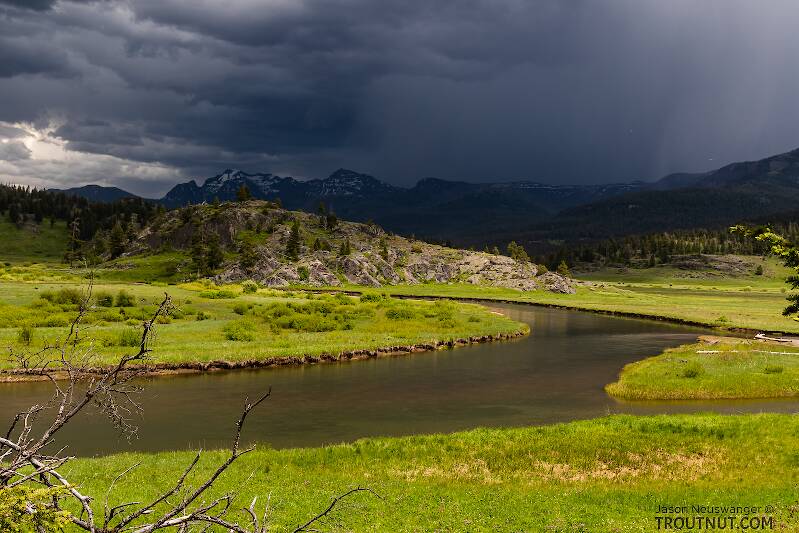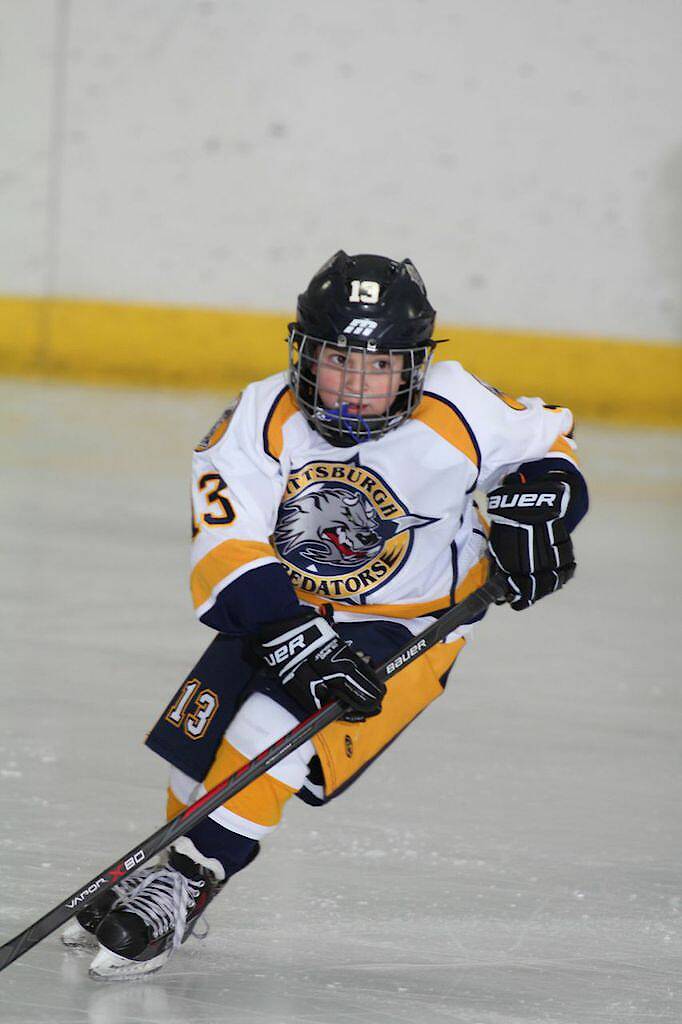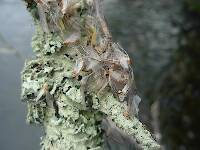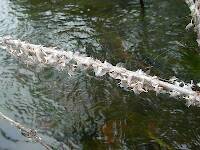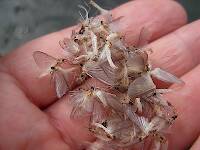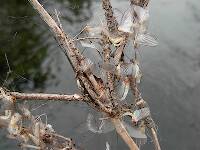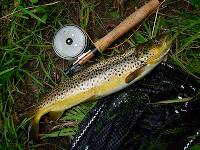
Blue-winged Olives
Baetis
Tiny Baetis mayflies are perhaps the most commonly encountered and imitated by anglers on all American trout streams due to their great abundance, widespread distribution, and trout-friendly emergence habits.
Featured on the forum

This specimen keys pretty easily to Onocosmoecus, and it closely resembles a specimen from Alaska which caddis expert Dave Ruiter recognized as this genus. As with that specimen, the only species in the genus documented in this area is Onocosmoecus unicolor, but Dave suggested for that specimen that there might be multiple not-yet-distinguished species under the unicolor umbrella and it would be best to stick with the genus-level ID. I'm doing the same for this one.

Troutnut is a project started in 2003 by salmonid ecologist Jason "Troutnut" Neuswanger to help anglers and
fly tyers unabashedly embrace the entomological side of the sport. Learn more about Troutnut or
support the project for an enhanced experience here.
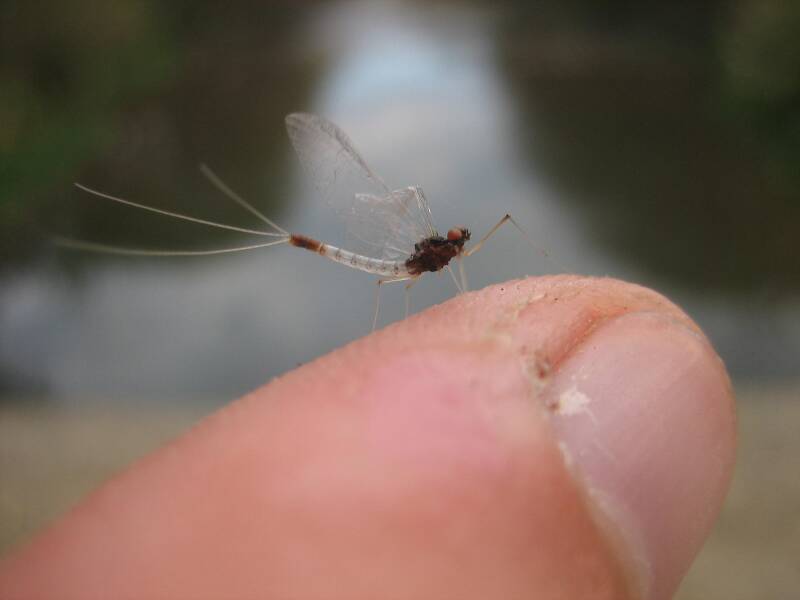
Oldredbarn on Nov 30, 2010November 30th, 2010, 4:23 am EST
spence - good thing you were upstream of the bladder emptying, stream warming, water raising, drunken fishermen.
Tony,
For arguments sake, lets just call the aforementioned bridge "Wakeley Bridge". This is the terminal end, on the Mainstream Au Sable, of the no-kill section known to anglers there as the "Holy Water"...It is considered "bad-form" to piss in the "Holy Water"...It don't even sound right...Right? So if he was on the opposite side of the bridge, the downstream side, I guess he was ok. :)
I want to know what everyone's ideas are on actually imitating the near clear sections of the abdomen on the critter at the start of this post...How do you plan on making the hook shank disappear??? I can see a couple strands/wrapped like a rope of dark peacock with a traditional wrapped & figure-eighted rooster hackle spinner wing for the thorax, but what to do about that abdomen?
Spence
"Even when my best efforts fail it's a satisfying challenge, and that, after all, is the essence of fly fishing." -Chauncy Lively
"Envy not the man who lives beside the river, but the man the river flows through." Joseph T Heywood
"Envy not the man who lives beside the river, but the man the river flows through." Joseph T Heywood
Gutcutter on Nov 30, 2010November 30th, 2010, 4:36 am EST
i would say, leave that realistic stuff to fred, but i'm gonna try anyways:
#24 tmc 2488 hook
extended abdomen (just a length of monofilament) with microfibettes secured (w 14/0 tan thread) and then segmented with the thread.
hiviz or cdc wing clump and
chocolate dubbed thorax and if i'm really in the mood, red thread for the head to match the eyes.
but hell, with such a small fly, why not just a small mayfly pattern tied with a mono abdomen... gonzo's chapter on large fly imitations vs. small fly imitations leads me to believe that it really shouldn't matter...
#24 tmc 2488 hook
extended abdomen (just a length of monofilament) with microfibettes secured (w 14/0 tan thread) and then segmented with the thread.
hiviz or cdc wing clump and
chocolate dubbed thorax and if i'm really in the mood, red thread for the head to match the eyes.
but hell, with such a small fly, why not just a small mayfly pattern tied with a mono abdomen... gonzo's chapter on large fly imitations vs. small fly imitations leads me to believe that it really shouldn't matter...
All men who fish may in turn be divided into two parts: those who fish for trout and those who don't. Trout fishermen are a race apart: they are a dedicated crew- indolent, improvident, and quietly mad.
-Robert Traver, Trout Madness
-Robert Traver, Trout Madness
Martinlf on Nov 30, 2010November 30th, 2010, 4:57 am EST
Mono extended abdomen--I like it! A Varivas ultra midge hook would work here too. But I'm not convinced that we'll find a fishable hatch of those bugs. If you were fishing with Shawn, you were on the stream where I waited and waited, years ago (see the early posts above), for those "Tricos" that weren't Tricos to fall. I now know better. But I'm always game for an experiment, and am sure we'll have to give it a go. Just as long as there aren't any hot fences anywhere nearby.
"He spread them a yard and a half. 'And every one that got away is this big.'"
--Fred Chappell
--Fred Chappell
PaulRoberts on Nov 30, 2010November 30th, 2010, 12:51 pm EST
Probably it wouldn't matter much, as others said. But I'd sure like to add that feature if I were fishing such a fall. Contrast may be the important thing there, rather than exactness. Mebbe pearl crystal flash or other such frosted pearly plastic ribbing for the clear section?
Orvis offered a hollow mono butt material a few years ago that might be just the thing. It seems to have disappeared from the shelves though.
Orvis offered a hollow mono butt material a few years ago that might be just the thing. It seems to have disappeared from the shelves though.
Konchu on Dec 1, 2010December 1st, 2010, 1:01 pm EST
This is very non-traditional, but I wonder if something like glad press'n'seal could be used to create the translucent part? those with lab access could try parafilm. both would be hard to work with, but might produce interesting results, especially if some color could be wrapped in wide swaths to imitate the joinings on the abdomen. the monofilament idea is hard to beat, though.
well, i'd better go. mythbusters is testing insect myths...
well, i'd better go. mythbusters is testing insect myths...
Quick Reply
Related Discussions
Topic
Replies
Last Reply
17
Apr 10, 2012
by Entoman
by Entoman
5
Aug 7, 2007
by Wiflyfisher
by Wiflyfisher
5
Aug 22, 2012
by PaulRoberts
by PaulRoberts

